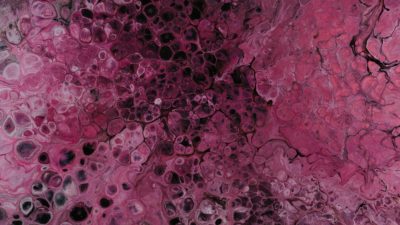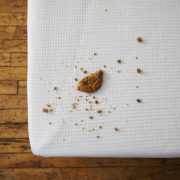The word “hypoallergenic” is overused in the mattress and sleep industry. Unfortunately, the use of the term isn’t closely federally regulated, so many can claim that their mattress is hypoallergenic without having to ‘prove’ it.
Therefore, calling a mattress hypoallergenic is merely a marketing play in many cases.
If you’re looking for a hypoallergenic new mattress, read on and find out how to tell about the duds for the real deal.
What Is A Hypoallergenic Mattress?
For something to be hypoallergenic means that it is unlikely to cause an allergic reaction. Hypoallergenic mattresses, therefore, are at least partially if not fully resistant to allergens. Usually, anti-allergen materials are used in the top layer of the mattress to prevent or kill pathogens or bacteria that might trigger an allergic reaction.
Can You Really Be Allergic To Your Mattress?
Yes, you can be allergic to your mattress. If you find that you are sneezing, coughing, or experiencing allergy symptoms like chronic dry throat or nasal congestion every morning, you may be allergic to the materials used in your mattress. Below, we’ll touch on a couple of the most common culprits that cause people to have allergic reactions around their mattresses.
Allergens Commonly Found in Mattresses
Dust Mites
House dust mites are small insects that are associated with indoor dust. Dust mites are closely related to bed bugs and pet dander and can cause strong allergic reactions. Covering your mattress with a dust mite encasement or mattress protector can help stave off pesky mites.
Mattress Materials
The materials used to construct mattresses can provoke allergic reactions in some. Even your mattress protector or mattress cover can provide a breeding ground for mildew, bacteria, and allergens. Often, flame retardants and fire retardants are to blame for allergic reactions, as well as organic cotton and wool.
Signs You’re Allergic To Your Mattress
There are many signs that you might be allergic to your mattress or something contained within it. A few of the most common symptoms you may not even expect. We’ve listed a few of the most common telltale signs of an allergic reaction below:
- Waking up with a sore throat
- Watery eyes in the morning
- Runny nose
- Frequent sneezing
- Aggressive cough in the AM
- Swollen lips, eyes, or face
Mattress Types & Hypoallergenic Qualities
Natural Latex
Many latex mattress brands incorrectly claim their products are hypoallergenic. Latex allergies are common – as much as 6 percent of the population are affected by latex allergies according to recent studies. Even natural latex products cause problems for people with this allergy.
Natural latex mattresses do have strong anti-allergen properties when it comes to dust mites, but people with latex allergies should avoid them.
Organic Cotton
It is rare for people to be allergic to organic cotton, and more likely that they’d be allergic to synthetic materials or dyes used in cotton products. Like with natural latex, organic cotton or organic wool mattresses are not exactly hypoallergenic due to some portion of the population being allergic to the natural products. However, they can limit dust mites and other allergens commonly found in mattresses.
Innerspring Mattresses
Innerspring mattresses may or may not be hypoallergenic depending on the materials used in the interior. Innerspring mattresses with mattress toppers containing synthetic substances to enhance breathability may cause allergic reactions.
Hybrid Mattresses
Hybrid mattress types combine different mattress types. Depending upon the materials used to make the mattress, they may be considered hypoallergenic. In general, it’s best to review all the materials in a mattress you’re considering if you want it to be hypoallergenic.
What You Should Do If You’re Allergic To Your Mattress
If you think you might be allergic to your mattress, there are immediate steps you can take to remedy the situation and get back to feeling like yourself. Below, we’ve listed what you should do if you believe your mattress is to blame for your allergy flare-ups:
- Give your bed sheets and pillowcases a wash in hot water to kill or eliminate pathogens
- Use a vacuum to clean your mattress of dust mites and other potential allergens
- Try sleeping on your freshly cleaned, washed, and vacuumed mattress for one or two nights
- If symptoms persist, invest in a mattress cover and protective casing
- Ensure that your bedroom is kept at a normal temperature and not excessively hot or humid
- If your symptoms are still present, consider shopping for a new mattress constructed with hypoallergenic materials
What’s The Best Mattress For Allergy Sufferers?
Sleepers who suffer from dust mite allergies should stick to natural or organic mattresses that only use materials found in nature, such as cotton, latex, and wool.
However, if you suffer from allergies to some of these natural products, it may be best to avoid this and go for a mattress made of synthetic materials.
Overall, though, it’s important to review the materials in any mattress before you buy it, especially if you’re aware of any allergies you have. Both Birch Living and Helix Sleep have extensive information on product materials to help users to make an informed decision on their mattress purchases.

















